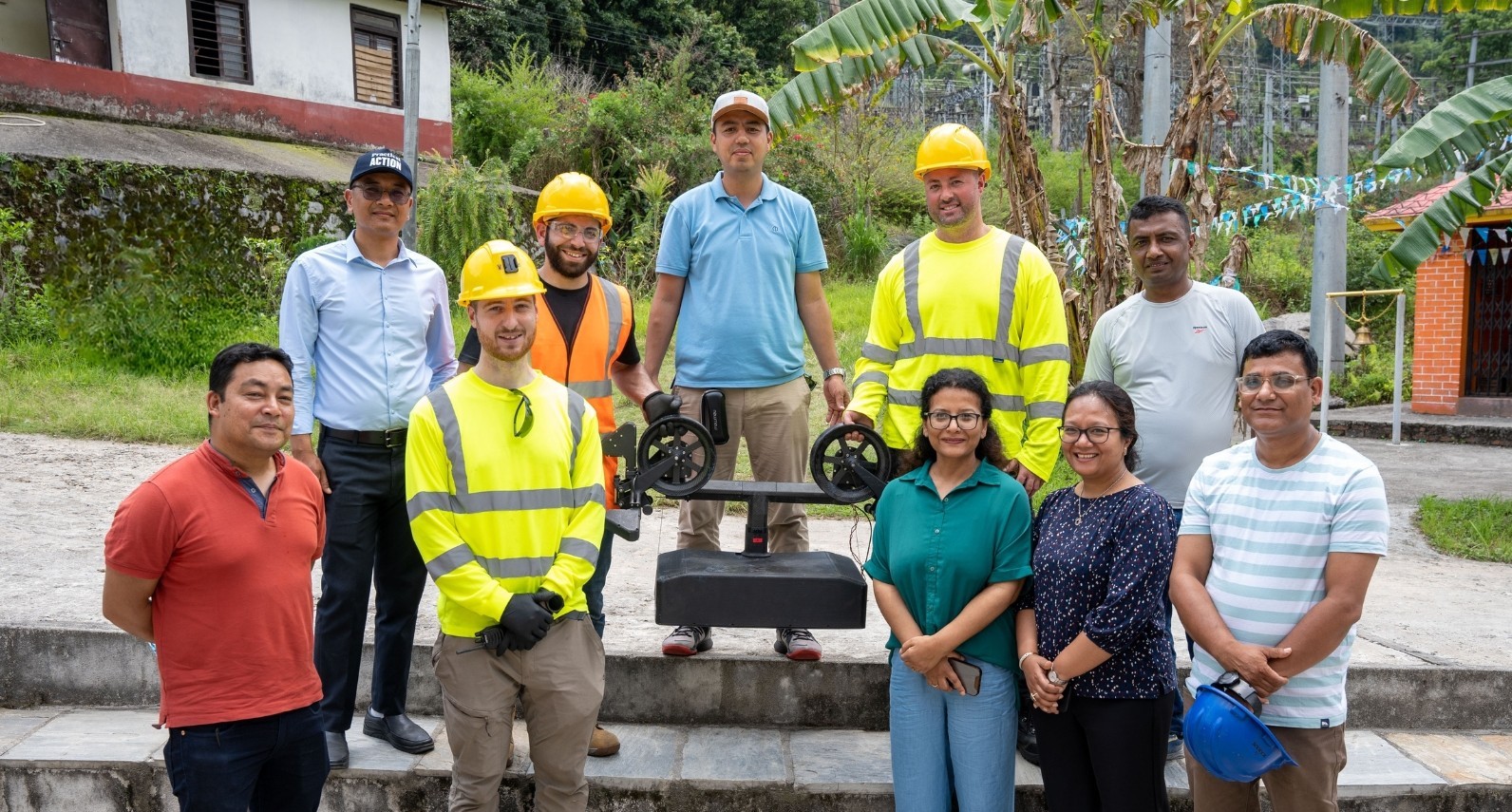AssetCool successfully executes a landmark project of CapacityN In-Situ Coating Platform in Nepal: Overhead Power Line Coating as a Service

15th May, 2025 Sindhupalchok District, Nepal
AssetCool, a leader in robotic and coating technologies for overhead power lines, has successfully executed a landmark project, implementing its CapacityN In-Situ Coating Platform for overhead line capacity enhancement in Nepal. This project demonstrates an essential new tool for grid operators in South Asia, especially relevant considering the challenges faced by the power utilities in the region.
The initiative involved the application of AssetCool's capacity-enhancing SE02 photonic coating on a critical 33 kV transmission line connecting the Lamosangu Grid substation to the Sunkoshi Substation. Delivered in partnership with the Nepal Electricity Authority (NEA) and Practical Action (PA), the project aimed to extend the capacity of power lines from the Sunkoshi Hydropower Station to surrounding communities without the need to upgrade the transmission infrastructure in the traditional way.
Using AssetCool's advanced robotic system, the SE02 photonic coating was precisely, efficiently, and safely applied in-situ across seven transmission towers, including a challenging span over the Sunkoshi Hydropower intake.
AssetCool’s SE02 photonic capacity enhancing coating applied in-situ addresses the challenges faced by regional power utilities through providing a cost-effective capacity enhancing solution at just 5% of the cost of traditional upgrades. This is particularly significant considering that the South Asia’s energy grid faces significant challenges, including limited rights-of-way, land acquisition hurdles, and aging infrastructure, which hinder the scaling of renewable energy and meeting growing demand. High ambient temperatures contribute to these issues by causing conductor sag and lowering thermal ratings. AssetCool’s SE02 cutting-edge photonic technology passively cools conductors by reflecting over 80% of solar radiation and emitting 93% of absorbed heat, reducing conductor temperatures and allowing for up to a 30% increase in line capacity thereby overcoming the challenges experienced by the power utilities.
Dr Niall Coogan, CEO of AssetCool, commented on the achievement: “Deployments like this don’t just showcase our technology, they truly evidence the scalability and potential impact of our robotic platforms. The speed of our scale-up, the international traction we’re seeing, and the success of projects like this in Nepal reflect a clear global appetite for solutions which unlock grid capacity and further facilitate the energy transition. Nepal is particularly compelling- with 2.6 GW of hydropower already installed, over 43 GW deemed feasible, and a theoretical capacity exceeding 83 GW. We’re proud that AssetCool’s technology is helping countries like Nepal unlock this immense potential-quickly, affordably, and in some of the most demanding environments on Earth.”
The deployment was witnessed by Ms. Resha Piya (Infrastructure Advisor) from the British Embassy in Kathmandu.
Commenting on this milestone, Ms. Resha Piya stated: “Congratulations to the AssetCool team on the successful implementation of the Capacity In-Situ Coating Platform in Nepal! This innovation not only boosts grid capacity but also significantly reduces infrastructure costs, a game-changer for developing nations like Nepal that are striving for sustainable and affordable energy solutions. Truly inspiring work!”
Nepal Electricity Authority (NEA) officials, Mr. Tek Nath Tiwari (Director, Bagmati Province Office) and Mr. Deepak Sapkota (Distribution Centre Chief) were present during the successful application of the coating technology. Over the coming months, AssetCool, Practical Action and NEA will collaboratively monitor its performance, with expectations of a notable increase in transmission line capacity. NEA representatives were excited to witness such innovative technology in action and expressed optimism that the results in the field will align with the team's initial projections and technical Assessments.
This achievement marks a significant step forward in building a more resilient, efficient, and sustainable energy future for Nepal.